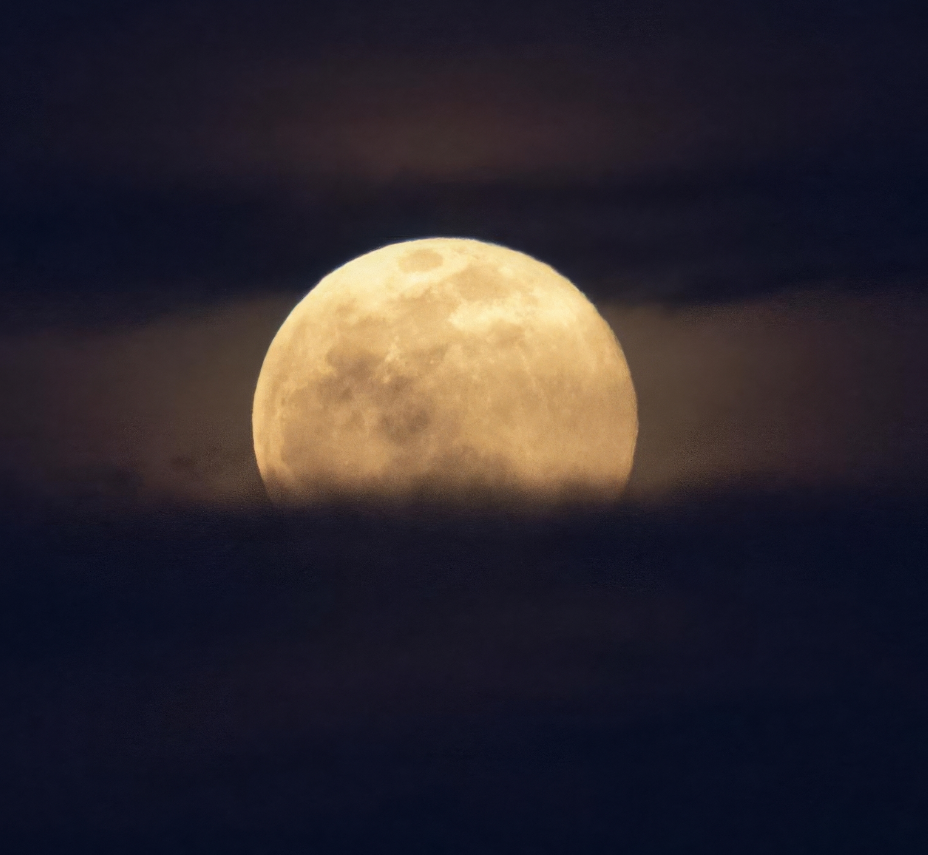
(Photo : science.nasa.gov)
- Tonight, a rare celestial event combining the Super Harvest Moon and a partial lunar eclipse will be visible in several parts of the world.
- The Super Harvest Moon appears larger due to its proximity to Earth, while the partial lunar eclipse occurs when the Moon enters Earth's shadow.
- This event is significant as it's the second of four consecutive Supermoons and the combination of a Supermoon and a partial lunar eclipse is rare.
- The last such event occurred in 1997, and the next is not expected until 2025.
Tonight, the heavens will put on a spectacular show, a rare celestial event that combines the Super Harvest Moon and a partial lunar eclipse. This astronomical phenomenon will be visible in western Asia, North and South America, Europe, Africa, and parts of Antarctica. Unfortunately, Indian sky gazers will miss out on this spectacle as the Moon will be below the horizon in the country during the time of the lunar eclipse.
The Super Harvest Moon, a term coined by astrologer Richard Nolle in 1979, refers to a new or full Moon that occurs when the Moon is within 90 per cent of its closest approach to Earth. This proximity makes the Moon appear slightly larger in the night sky, hence the term 'Supermoon'. The 'Harvest Moon' part of the name comes from the Old Farmer's Almanac, which refers to the full moon of September as the Harvest moon, marking the traditional start of corn harvests.
Understanding the Lunar Eclipse
The partial lunar eclipse, on the other hand, occurs when the Moon is slightly closer to Earth due to its elliptical or oval-shaped orbit. This proximity results in the Moon entering the Earth's shadow, causing a partial eclipse. According to NASA, the Moon will start entering the Earth's partial shadow at 8:41 pm EDT on Tuesday (6:11 am IST, Wednesday). The peak of the eclipse will be at 10:44 pm (8:14 am IST), and the Moon will finish exiting the full shadow at 11:16 pm and the partial shadow on Wednesday at 12:47 am.
NASA also noted that the slight dimming of the Moon would be difficult to notice until the top edge of the Moon starts entering the full shadow. As it is a partial eclipse, only the top 8 per cent of the Moon will be in full shadow. Despite this, the event promises to be a visual delight for sky gazers.
Significance and Historical Precedence
This celestial event is significant as it combines a Supermoon, which appears larger, with a partial lunar eclipse, creating a rare visual spectacle. The Moon will appear full for about three days, from Monday evening through Thursday morning, providing ample opportunity for viewers to enjoy the spectacle.
This event is the second of four consecutive Supermoons, appearing larger than last month's Supermoon and effectively tied with the full Moon in October for the closest full Moon of the year, according to NASA. Historically, similar events have occurred, but the combination of a Supermoon and a partial lunar eclipse is rare. The last time such an event occurred was on September 16, 1997, when a Harvest Moon coincided with a partial lunar eclipse. The event was visible from Europe, Africa, Asia, and Australia. The next similar event, according to astronomers, is not expected until 2025.









